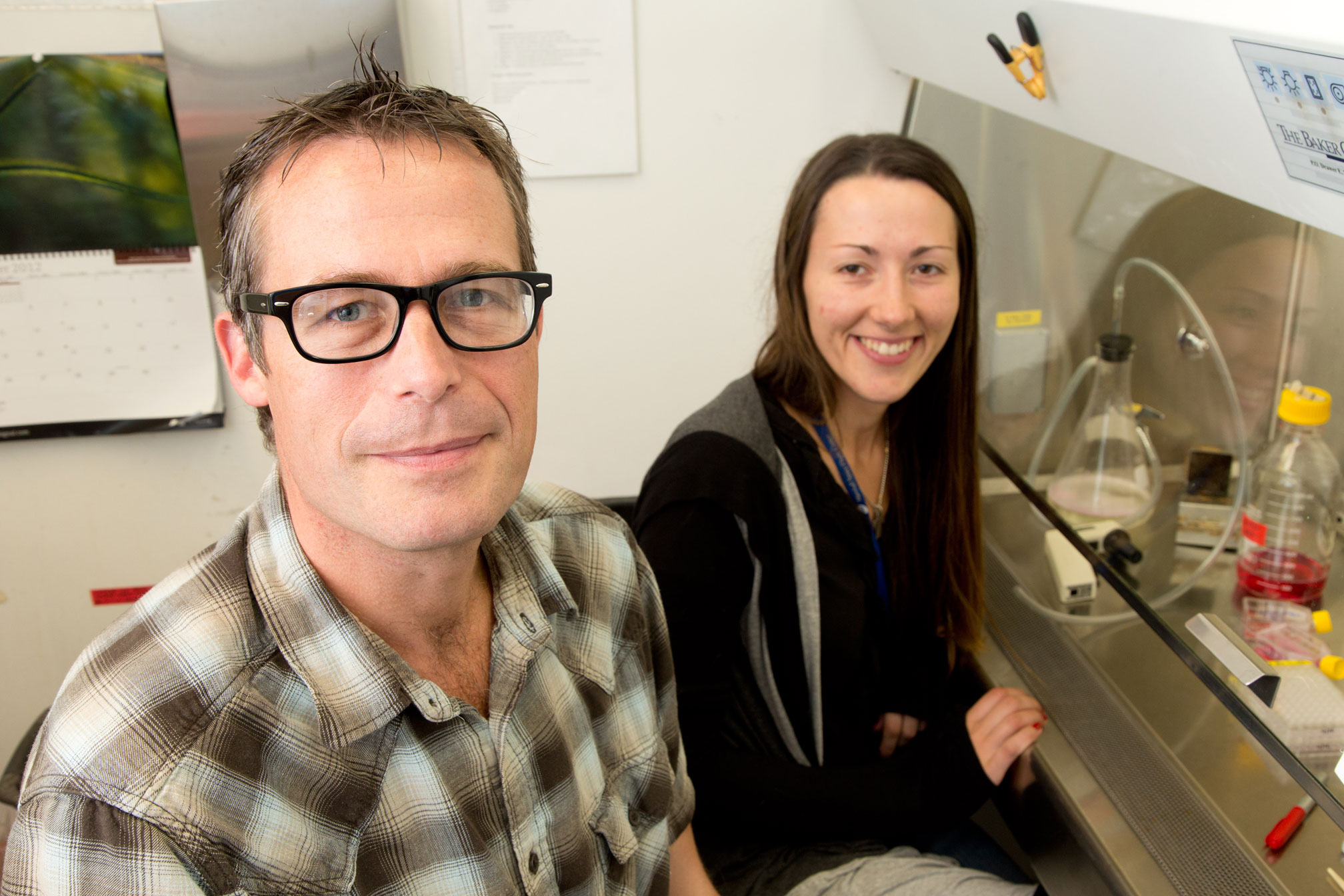In 1993, a water-borne parasite in Milwaukee was responsible for an estimated 403,000 cases of acute gastrointestinal disease, and the outbreak revealed that patients with AIDS are at an especially grave risk. About half of Milwaukee’s residents with AIDS were infected with the parasite, 68 percent of whom died within six months. This parasite, Cryptosporidium parvum, is highly resistant to standard water treatment, which has caused additional concerns over its potential use in bioterrorism.
Now, a team of UGA biologists led by Boris Striepen has discovered that the parasite, in order to survive, depends on so-called “salvage enzymes” to steal away nutrients from its host. The discovery provides new targets for drug design to treat victims of this parasitic disease, for which there is currently no effective cure.
The findings were published last month in the Proceedings of the National Academy of Sciences. Co-authors of the paper are Jessica Kissinger, Andrea Pruijssers, Jinling Huang, Marc-Jan Gubbels, Catherine Li and Nwakaso Umejiego of UGA’s Center for Tropical and Emerging Global Diseases and Lizbeth Hedstrom of the department of biochemistry at Brandeis University.
“There are a number of reasons why it’s urgent to find some way to treat those infected with C. parvum,” says Striepen, who is also affiliated with the CTEGD. “Chronic severe diarrhea caused by the parasite is a frequent and life-threatening complication in AIDS patients, and the disease also causes significant morbidity in children in many areas of the world, especially when combined with malnourishment.”
Outbreaks of disease caused by the parasite are not uncommon in the United States and other industrialized nations, and Cryptosporidium has become the most important contaminant found in drinking water. In 2000 and 2001, there were three drinking-water-associated outbreaks in Northern Ireland, for instance, and several hundred cases of illness discovered. Striepen says that the resistance of C. parvum to standard drinking water treatments and its ability to cause massive outbreaks have also caused concern among those fighting bioterrorism and have led the Centers for Disease Control and Prevention to list C. parvum as a category B pathogen.
Fortunately, the effort to sequence the genome of C. parvum is nearly complete, giving researchers a powerful tool to study how the organism works.
“One of the strengths of this research is that it combines bioinformatics and experimental testing in the laboratory,” says Striepen. “Using both approaches, we got to solid conclusions fast.”
Striepen, in close collaboration with Jessica Kissinger’s bioinformatics group, discovered something somewhat unexpected in the genome of the parasite: The parasite has lost the ability to synthesize a group of compounds called pyrimidines, which are crucial building blocks of DNA in any living organism. The loss of the entire pathway for synthesis of pyrimidine was surprising, since recent genetic analysis of Toxoplasma gondii, a related parasite which causes encephalitis, showed that functional pyrimidine de novo synthesis is “essential for the development, and hence virulence, of this parasite in the host.”
What the UGA team has demonstrated in this paper is that the parasite escapes this pinch by “salvaging” pyrimidines from the cells of its host. While parasites usually salvage nucleotides of another crucial genetic compound, purine, from their hosts, this is the first evidence of a parasite using pyrimidine only from the cells it infects.
Further analysis reveals that the parasite is not only salvaging the DNA building blocks but has also salvaged some of the genes involved in this process.
“Both the pyrimidine and purine synthesis pathways are unlike those in related parasites that have been studied in the past,” says Striepen. The ability to pick up genes from other organisms by “gene transfer” is well known in bacteria (and the reason why resistance to antibiotics is spreading so fast among them) but a new concept in parasites.
As a result of gene transfers, the enzymes used by C. parvum represent an “evolutionary patchwork, stitched together from protozoan, bacterial, and potentially algal sources,” according to the study.
“The finding that these parasites collect useful genes from other organisms can help us to understand how they could adapt so well to a parasitic lifestyle,” says Striepen. “From an applied point of view, the discovery of a series of bacterial [and therefore very different from human] genes gives us an exciting list of new and highly ‘drugable’ targets.”
The fact that the parasite thrives in a different way from others may also explain why no drugs have been found thus far to treat the infections it causes. (A class of drugs called antifolates have been widely and successfully used against the phylum of which C. parvum is a part-the Apicomplexa.)
For now, C. parvum remains hard to kill. But information gleaned from this study points the way to new drugs to treat cryptosporidiosis. One intriguing possibility may be genetically engineered model parasites created to express C. parvum genes.
This could allow a completely new approach to screen efficiently for potential drug candidates, one of the next goals of the team at UGA.


